Common mallard (Anas platyrhynchos) is the most common wild duck in the world, which became the ancestor of all domestic ducks. Thanks to its omnivorous, hardy, and adaptable to a variety of environments, mallard is found from From Europe to Asia, North America and even Australia.
This view attracts attention bright male coloration, calm personality and complex social behavior. Mallard play an important role in ecosystems by controlling the abundance of aquatic invertebrates and spreading the seeds of aquatic plants.
In this article, we will look at background, appearance, behavior, lifestyle, food habits, natural threats, and interesting facts about the common mallard.
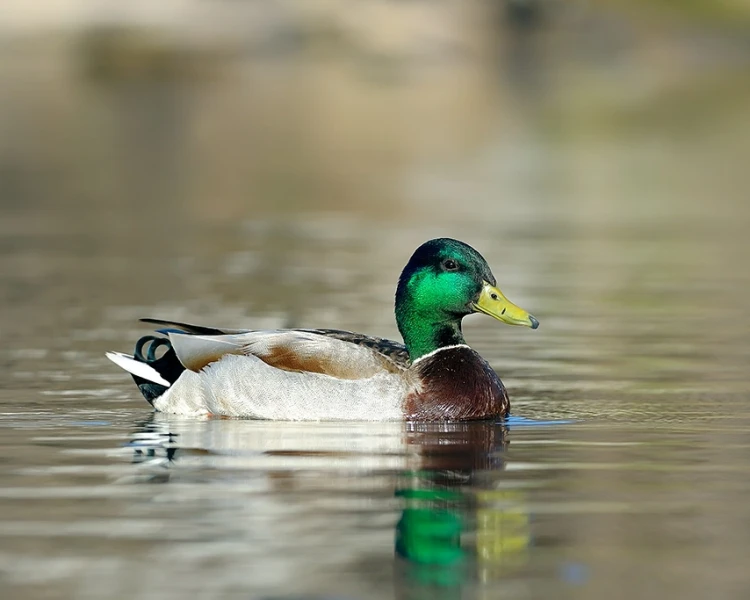
Scientific classification
🔬 Classification of mallard vulgaris:
✔ The Kingdom: Animals (Animalia)
✔ Type: Chordal (Chordata)
✔ Class: Birds (Aves)
✔ Row: Geese (Anseriformes)
✔ Family: Duck dishes (Anatidae)
✔ Gender: Ducks (Anas)
✔ View: Anas platyrhynchos
📌 Interesting!
Title platyrhynchos it comes from the Greek language and means "shirokoklyuvy ", which perfectly describes the characteristic shape of the mallard's beak.
Appearance and anatomy
, Main Features:
✔ Body length: 50-65 cm
✔ Wingspan: 81-98 cm
✔ Weight: 700-1500 g
✔ Life span: in the wild-5-10 years, in captivity-up to 20 years
🔹 Color scheme:
✅ Male:
• Chairman – bright green with a metallic sheen
• Breasts – chestnut-brown
* Back and wings – gray-brown
• Beak – yellow
* Tail – black with white edges
✅ Female:
* Camouflage equipment brown-brown color
• Beak – dark orange with black spots
🔹 Features of the structure:
✅ Broad beak with scalloped edges - helps filter food out of water
✅ Swimming webs between the fingers - provide efficient movement in the water
✅ Sharp eyesight and good memory - make it easy to find food
📌 Interesting!
Mallard feathers are covered the fat layerwhich makes it waterproof!
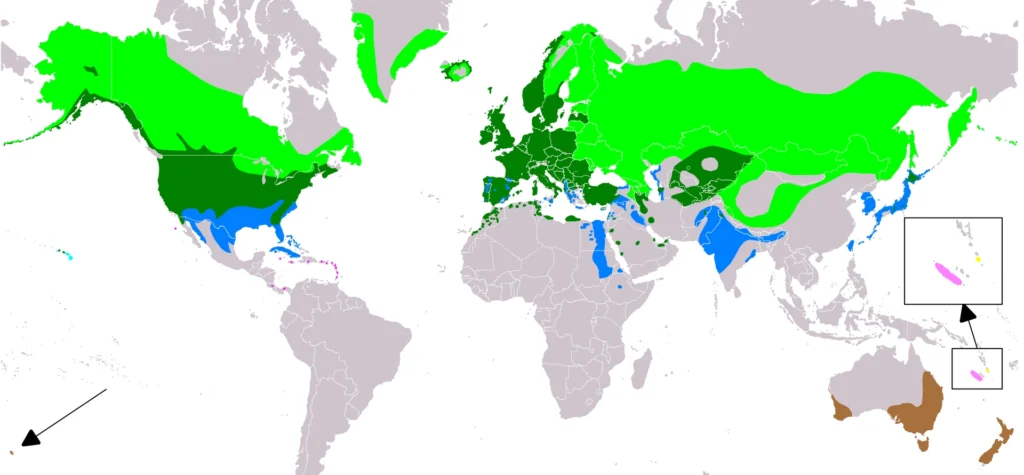
Habitat and distribution
🌍 Where does the mallard live?
He's dating throughout Eurasia, North America, and parts of Africa.
🔹 Typical habitats:
✅ Lakes, ponds, and rivers
✅ Swamps, floodplains, flooded meadows
✅ Parks and urban reservoirs
📌 Interesting!
Mallards easily adapt to the urban environment and they are often found in water bodies even in large cities.
Behavior and social structure
Mallards – flocking birds, presenters sedentary or nomadic lifestyle.
🔹 Basic behavioral traits:
✔ Generate temporary packs, especially during wintering season
✔ Males lead active competition for females
✔ Use a variety of voice signals
📌 Interesting!
In flight, the mallard develops speed up to 80 km / h!
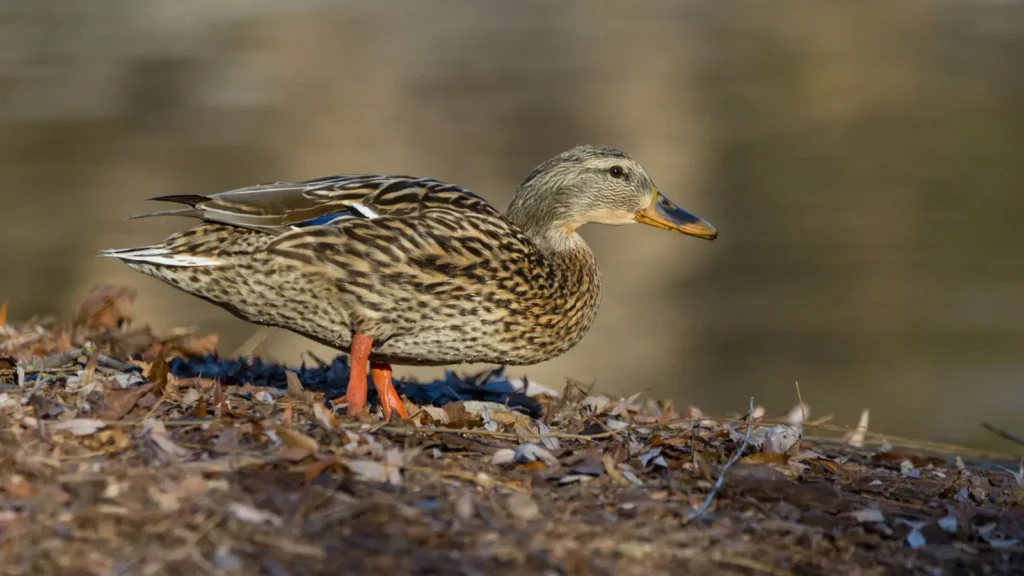
Hunting and nutrition
Mallard – omnivorous duck, which finds food on the water, in the mud and on the shore.
🔹 What does a mallard eat?
✅ Algae, seeds, roots
Насеком Insects, molluscs, crustaceans
✅ Small fish and frogs
🔹 Foraging methods:
✔ Beak water filtration
✔ Submerging your head in water
✔ Food on land
📌 Interesting!
Mallards often they feed together with swans and other duckslooking for leftovers of their food.
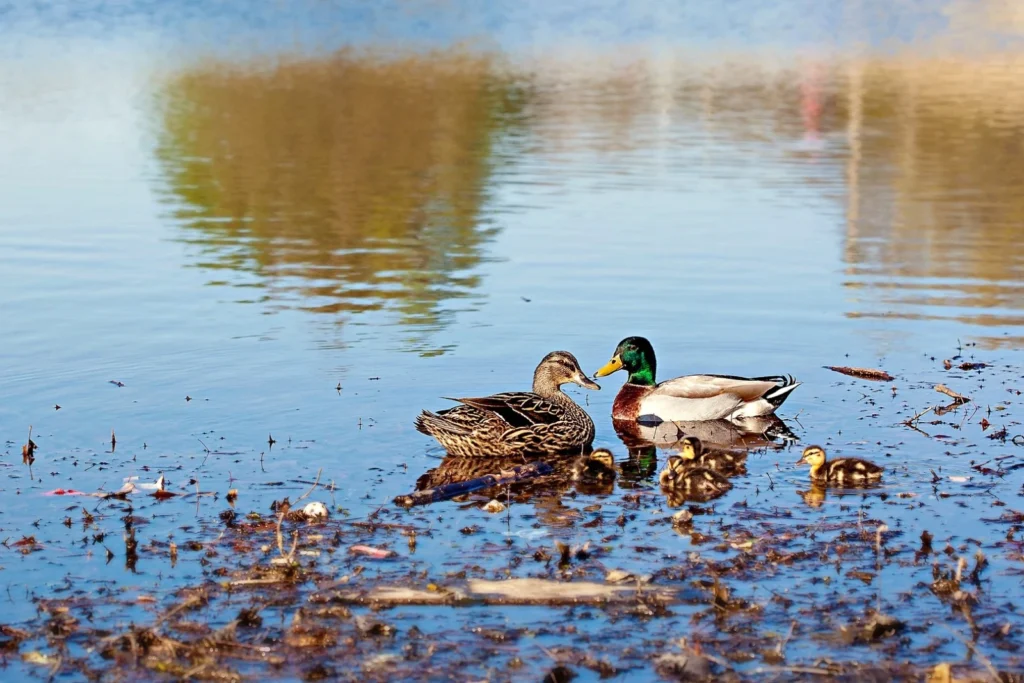
Breeding and raising ducklings
Mallards monogamous couples during the breeding season, but may form new pairs every year.
🔹 Mating season:
Начинается Starts in spring (March-April)
Males perform ritual dances and display their plumage
🔹 Nesting:
✅ The nests have in the grass, among bushes, or even in trees
✅ Use dry grass and feathers
🔹 Eggs and chickens:
✅ They put it off 7-13 eggs
✅ Incubation continues 27-28 days
✅ Ducklings they are born sighted and covered with down, can swim from day one
📌 Interesting!
Ducklings imitate their mother and remember her voice even before birth!
Natural enemies and threats
🔹 Main natural enemies:
✅ Foxes, raccoons, ferrets
✅ Birds of prey-kites, hawks
Кры Rats (attack eggs)
🔹 Main threats:
⚠ Poaching
⚠ Water pollution
⚠ Destruction of natural nesting sites
📌 Interesting!
Mallard is perfectly camouflaged among vegetation, which helps to avoid predators.
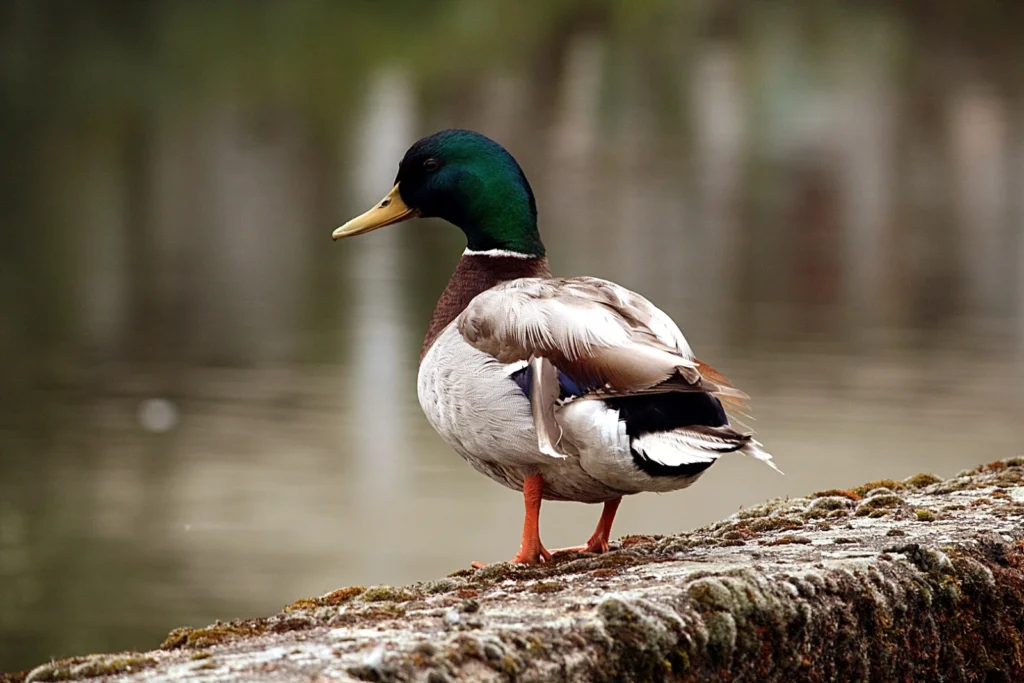
Interesting facts about the common mallard
✔ Ancestor of domestic ducks
✔ It can fly at an altitude of more than 6000 m
✔ Remembers migration routes
✔ Often lives near people
✔ Has excellent hearing and vision
Conclusion
Common mallard – an intelligent, hardy and sociable bird that has become an integral part of the ecosystems of water bodies around the world.
📢 Thanks to its ability to adapt to different conditions, it remains one of the most successful representatives of duck breeds! 🦆💦